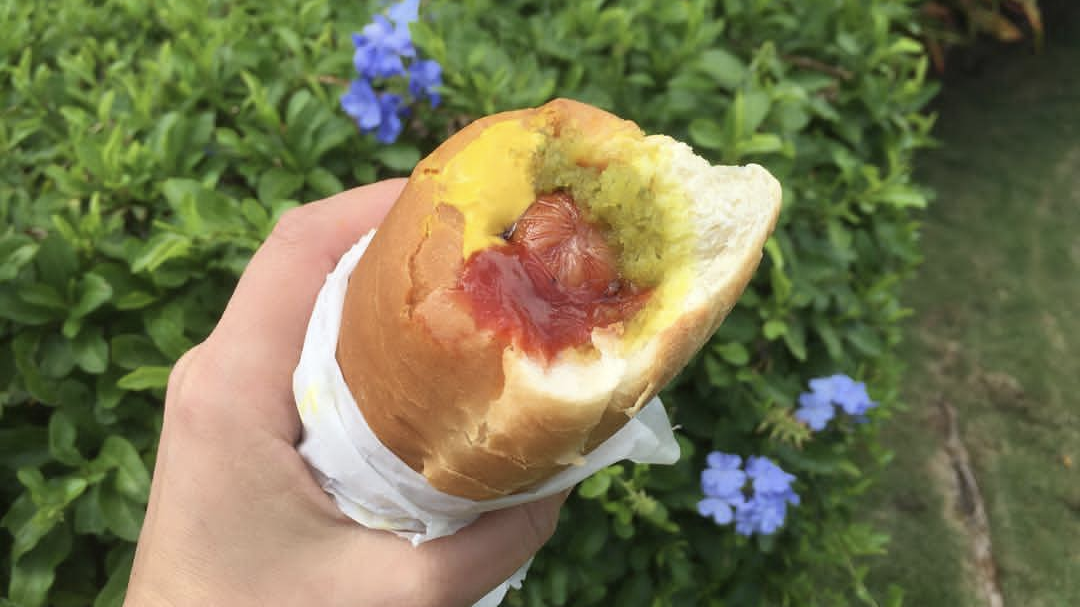Hawaii Does Hot Dogs Differently
Both tradition and modern innovation play a role in Kaua'i cuisine.
The first time I landed on the Hawaiian island of Kaua'i, I felt something new. The island is awash in breath-snatching beauty, from beaches, mountains, valleys, and the scenic Waimea Canyon, but what struck me was how the air was charged with a sense of something like reverence, a visceral feeling of cultural pride and respect for tradition that was even stronger here than on any other Hawaiian island. As the oldest of the islands, Kaua'i cradles the ancient legacy of Hawaiian history and tradition. This island isn't about tourist traps; it's suffused with heritage, much of which is edible.
Hawaiian history and heritage on display
My first stop was Po'ipu Beach, where monk seals lolled in the sun. These endangered animals predate humans in the area and their presence is reflected in traditional oral histories and drawings. A five-minute drive away, I saw water spouting 50 feet in the air with a hissing noise and crashing into waves. It was unnerving to watch, but the Spouting Horn blowhole is one of the most photographed spots on Kaua'i.
The legend goes a giant mo'o (lizard) once guarded the coastline and he ate people who swam or fished there. One day a man named Liko swam there, and when the lizard tried to attack him he swam under the lava shelf and escaped through the blow hole. The lizard got stuck in the blowhole; the sounds we hear today are his roars of pain. Scientifically, the noise is explained by pressurized air forcing its way through cracks in the rock, but the drama of the shooting water and groaning blast makes the apocryphal tale all the more credible.
As I walked Kaua'i's windswept coastline, I heard a mele (chant) echo over a beach. Elders were chanting the names of their family line across generations in a traditional ancestral ritual whose lilting sound paired with the waves. Soon after, similar rhythms accompanied a hula kahiko performance, the ancient form of hula dance that developed before Western contact. It differs from the contemporary hula auana, which most visitors recognize for its undulating hips and expressive arms. The kahiko form features rigid arms and only traditional percussion and chanting for accompaniment, and the dancers' footwork told a story about the green hills of Waimea.
Later that night, I relaxed to the complex melodies of Hawaiian slack key guitar, listening to the classic "Ku'u Home O Kahalu'u" at Duke's Beach Bar. It sounded like the chords were meant to be combined with the sound of the water.
Tasting Hawaii’s glorious Puka Dog
One of the first things I learned about Kaua'i food was that a true Hawaiian meal will "brok da mout," or taste really good. As I quickly found out, most dishes on the island fit this description.
I gobbled up traditional eats like lau lau, which is fish or pork wrapped in a savory bundle of taro leaves and steamed in coconut milk, as well as haupia, a creamy coconut pudding. But alongside these traditional dishes were more modern offerings, such as the delectable Puka Dog.
This Hawaiian-style hot dog features a polish sausage (or veggie dog) wrapped in a toasted Hawaiian sweet bun that has a puka, or hole, punched out of the middle. The hole is filled with a selection of local fruit-forward sauces: coconut, starfruit, or banana relish, passionfruit mustard, and garlic lemon sauce. It's as messy and chaotic as it sounds and worth a plane ticket to Kaua'i for just one sweet and succulent bite. I thought the Puka Dog was my favorite Kaua'i food, right up until I went to a luau.
The flavors of a Hawaiian luau
Luaus figure prominently in pop cultural depictions of Hawaii, but these festive events were a significantly more formal part of ancient traditions. Luaus were feasts held to celebrate occasions like launching a canoe or honoring Hawaiian goods. Women weren't allowed to dine with men at luaus until 1819 when King Kamehameha II invited them to join in. Food was the main focus then, while modern luaus combine food and entertainment.
The centerpiece is always the Kalua pig, a whole hog covered in ti leaves, wrapped in chicken wire, and lowered into an imu, or cooking pit, where it's roasted over hot coals for eight hours. While it's a dramatic sight, I don't eat pork, so I figured I'd miss the centerpiece of the feast altogether—until I glimpsed the poi.
Poi is pounded taro root and looks like lavender pudding. The taro plant is so sacred to Hawaiian culture that it's considered an insult to argue once poi is served. Why? Because Hawaiian custom dictates that it's disrespectful to argue in front of an elder, and as the living embodiment of Haloa, the ancient ancestor of the Hawaiian people, taro is technically the elder brother of all Hawaiians.
Though imbued with cultural significance, poi is definitely an acquired taste. Its flavor might surprise visitors, due to its often sour taste and paste-like consistency. The first few times I tried it, I concentrated on the lovely shade of purple (my favorite) rather than the sour notes.
Hanalei Poi changed that. This product is made fresh on Kaua'i and is widely considered the best poi you can eat; you might see people rave about it on social media. I spooned it up and detected only slightly sweet, smooth goodness. I ate bowlfuls of poi throughout my trip and considered smuggling a tub in my suitcase. It's a simple dish without any showy ingredients or flavors, but like Kaua'i, its beauty is in its direct connection to nature.
